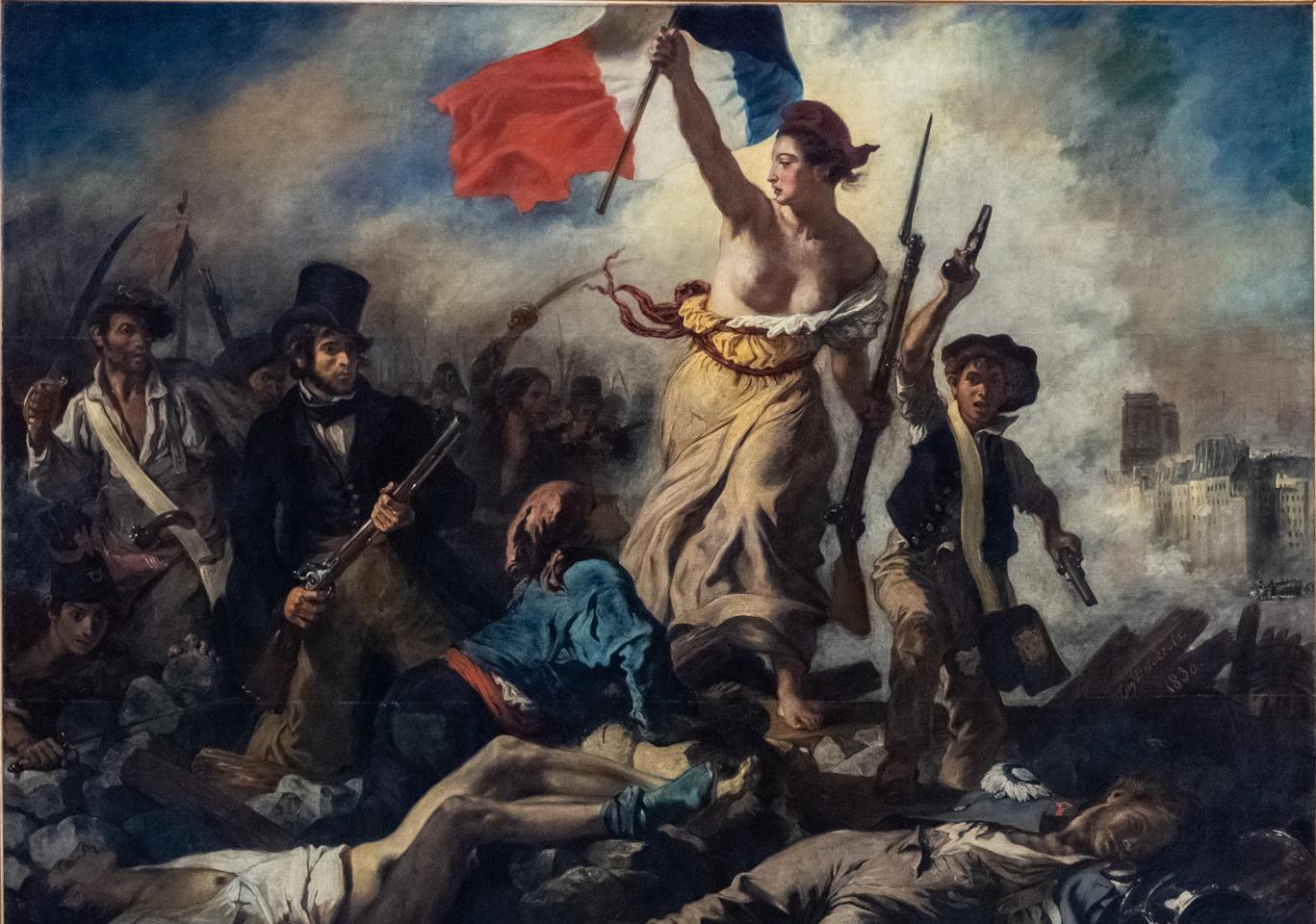Liberty Leading the People

by Eugène Delacroix.
Artists gained more freedom thanks to the French revolutions. They could choose their subjects.
Delacroix's allegorical painting of the 1830 Revolution, is a great example of this.
“Liberty Leading the People”, represents a woman who carries the French flag above her head. She is the Liberty personified. Some people call her “Marianne”. Dressed as a Greek Goddess, she is leading the people into battle.
Delacroix painted this piece of art after the Revolution of 1830 that overthrew Charles X, the last king of the Bourbons dynasty, of his throne. The Paris uprising took place over 3 days in July, known as the “Three glorious days”. Delacroix used this theme as a symbol of modernity and painted it in a deeply romantic style. The successor of Charles X, King Louis-Philippe, the Duke of Orleans, bought the painting.
The approach of the artist to the subject is highly emotional and has a lasting effect on the viewer. The dramatic scene mixes fiction and reality: freedom is a fictitious appearance of patriotism; however, the corpses of the people are surprisingly real.
The technique used is interesting since paint is applied with more texture, which inspired modernists such as Edouard Manet and James McNeill Whistler; moreover, the approach inspired other artist’s piece of work, such as “Les Misérables”, of Victor Hugo. The writer chooses the young man situated to the right side of Marianne to be his character (Gavroche) in his novel! We can also see the towers of Notre-Dame through the smoke of the canyon, reminding us that the uprising took place on the streets of Paris. Additionally, he paints the Parisians rising above the enemy in the latest releases of the conflict. Despite having not participated physically in the fight, the artist claimed to have defended his country with painting.
At that time, the painting was rejected by critics due to its lack of classicism, and was not shown to the public until 1863, when it entered the Luxembourg Museum!
© ChatGPT 3.5